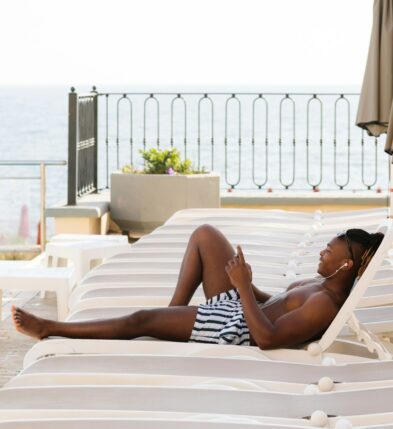Hopping from one Greek island to the next is the most quintessential way of discovering Greece’s overwhelming charm. The country is blessed with so much sea; more than any other country in the Mediterranean. It has a massive coastline with over 200 inhabited Greek islands, and the total of all islands and isles that make up the entire Greek Archipelago is a mind-blowing 6000. These statistics are excluding the countless coastal spots that share similar attributes with the islands, some of which harbour striking remnants of a diverse cultural heritage as well as fabulous beaches. It, therefore, goes without saying that Greek island hopping is a must. However, for someone unfamiliar with Greece, organising Greek island hopping routes can be confusing. So, if you are looking for Greek island hopping routes from Athens, here are 4 proposed itineraries that will reveal the full magnitude of Greece’s unfathomable natural and cultural wealth.
Saronic islands – Poros | Aegina | Hydra | Spetses
The closest island cluster to Athens is the Saronic, and it includes the islands of Salamina, Aegina, Agistri, Poros, Hydra and Spetses. Being so close to Athens, ranging from less than an hour to up to two hours by ferry, these islands are, on the one hand, overlooked by foreigners who will tend to choose the more high profile Greek islands, yet often frequented by Athenians, seeking a short escape from the city.


Poros is known for its Lemon Forest while Aegina, which is renowned for its pistachio production, is a must-visit although one could argue it is not one of the more beautiful islands to behold. The most picturesque of the islands mentioned above are definitely Hydra and Spetses, with their colourful array of beautiful, traditional mansions. Getting to the Saronic islands is an easy feat from Athens. You can opt for a one-day sailing trip to the Saronic islands and include up to three islands in a single excursion, or you can island hop at your own leisure and pace since most of these islands have excellent connections between them. What you will find these islands have in common is a rustic, vintage air about them; don’t expect opulence or over the top luxury. Instead, you will experience a most refreshing flashback to Greece of the 1960s.
Cycladic islands – Santorini | Mykonos | Paros | Folegandros | Koufonisia
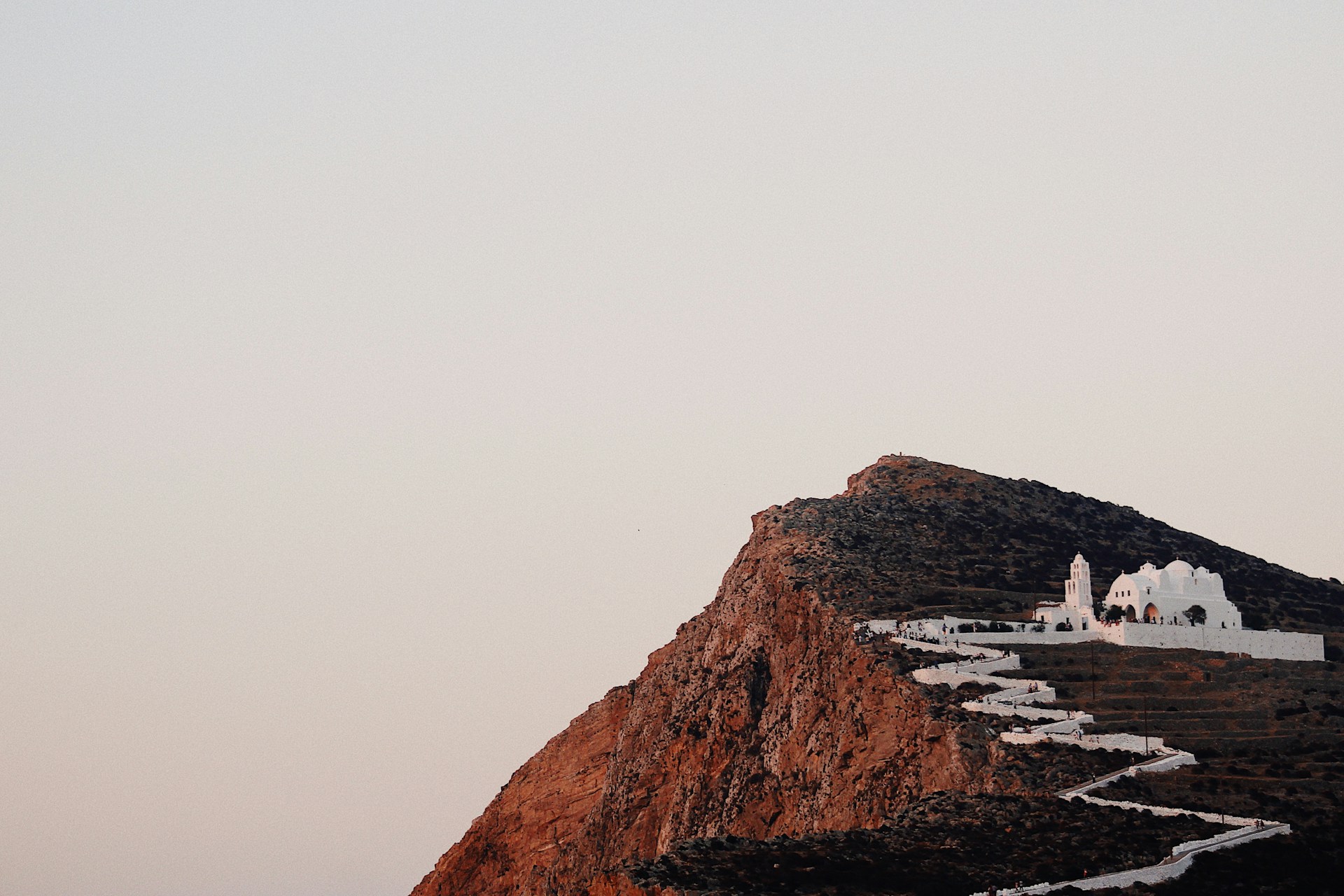
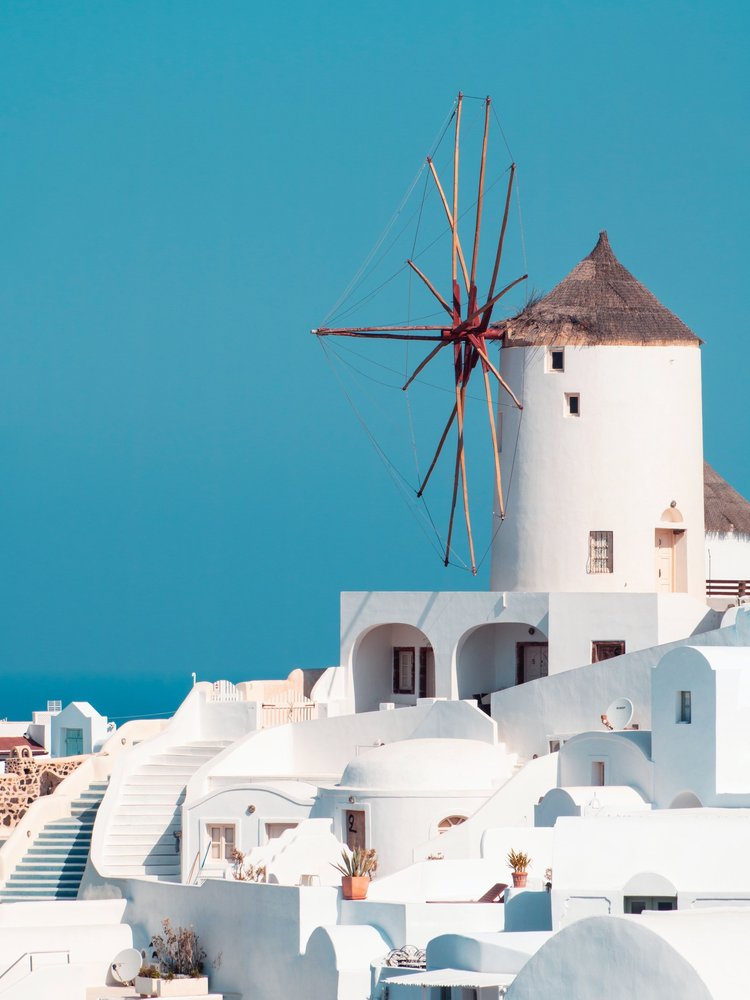

The most famous island cluster in Greece, home to the glamorous Mykonos, the dreamy Santorini, the laid-back Paros and the demure Folegandros, the no man’s island of Poliegos or the secluded Koufonisia, among many others. The Cyclades have a healthy mix between cosmopolitan destinations and others that are more authentic, where life has been mostly unaffected by mass appeal. Twenty major islands and nearly as many minor or secondary islands make up the sensational Cyclades that are aggregately responsible for the typical white & blue colour palette that most people often associate the Greek islands with. Cubist buildings, dome churches, quaint fishing villages and largely barren, wind-swept, rocky terrains are prevalent in the Cyclades. And although the islands of this cluster share these structural characteristics, each place exudes a unique aura of its own that defines it beyond its overarching Cycladic traits.
Relatively easy to reach from Athens due to their popularity, connections from the main port of Athens, Piraeus, to the Cyclades are frequent, however, can take up to 4 hours or more. The most convenient alternative is to fly to each island that has an airport (Santorini, Mykonos, Paros & Naxos) which will save you valuable transfer time. However, the best way to island-hop in the Cyclades is to either reach your preferred island and book a multi-day Cyclades island charter or book your Cyclades island cruise from Athens. This will depend on how many days you can spend island hopping, how comfortable you are continually being on the move as well as your budget. However, there is one thing that these types of island hopping routes by sea have as a distinct advantage; it is a convenience of boarding just once while being able to visit a handful of destinations.

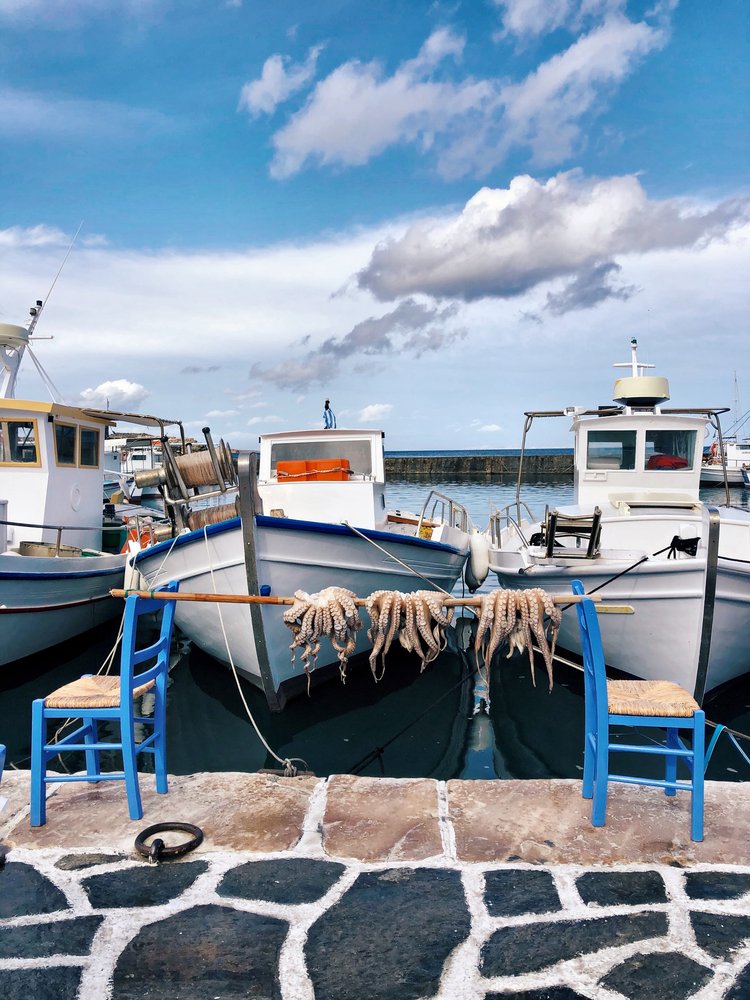
Ionian islands – Corfu | Paxoi | Zakynthos | Kefalonia
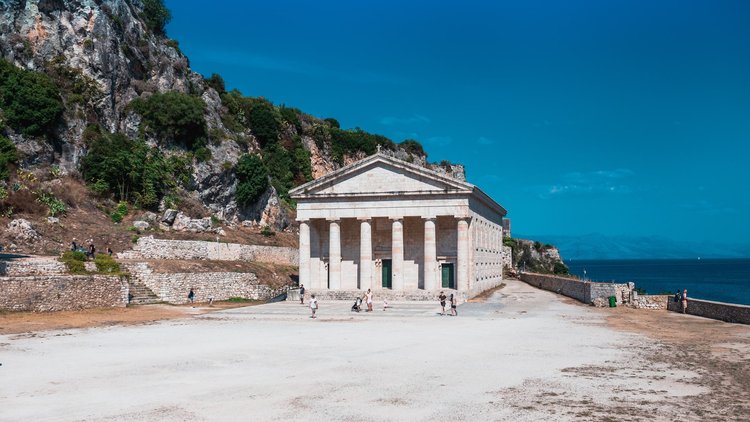
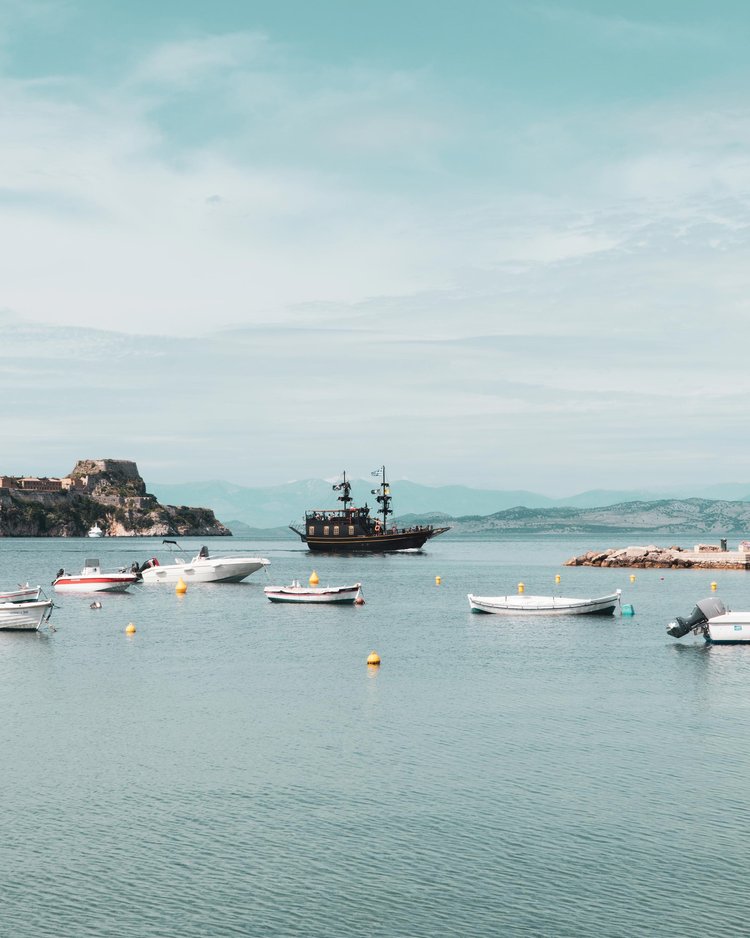

Onto the other side of Greece that is graced by the tropical-esque Ionian sea and its exotic-looking shores. Fine white and dusky pink sands that are lapped by the smooth waves of crystalline waters create staggering visuals that are simply awe-inspiring. Swimming in the Ionian waters is like swimming in a turquoise pool, and that is no exaggeration, while the coastline is full of secret coves and water caves. Your Greek island hopping route itinerary in the Ionian should cover at least two significant islands (Corfu, Lefkada, Zakynthos & Kefalonia) and definitely the twin isles of Paxoi (Paxos & Antipaxos). The fastest way to reach one of the major Ionian islands from Athens is by flight and takes around an hour. The alternative is to drive 6 hours to Igoumenitsa and then a 1- 2 hour ferry ride, which is perhaps not the best use of your time unless you really enjoy road trips.
From your chosen major island, you can then make arrangements to hop over to the others. For example, a boat trip to Paxos and Antipaxos from Corfu takes about 1-1.5 hours after which you will arrive at a liquid, azure oasis that will instantly beckon you to dive into its transparent depths. But these kinds of waters are not unique to the Paxoi isles. Among the many shimmering shores that the Ionian can boast about, Zakynthos’ (or Zante’s) top highlight is the shipwreck beach while Kefalonia is home to some of the most stunning beaches, Myrtos, as well as having the astonishing, natural dome-shaped, Melissani sea cave.

Northern Aegean islands – Thassos | Samothrace | Icaria
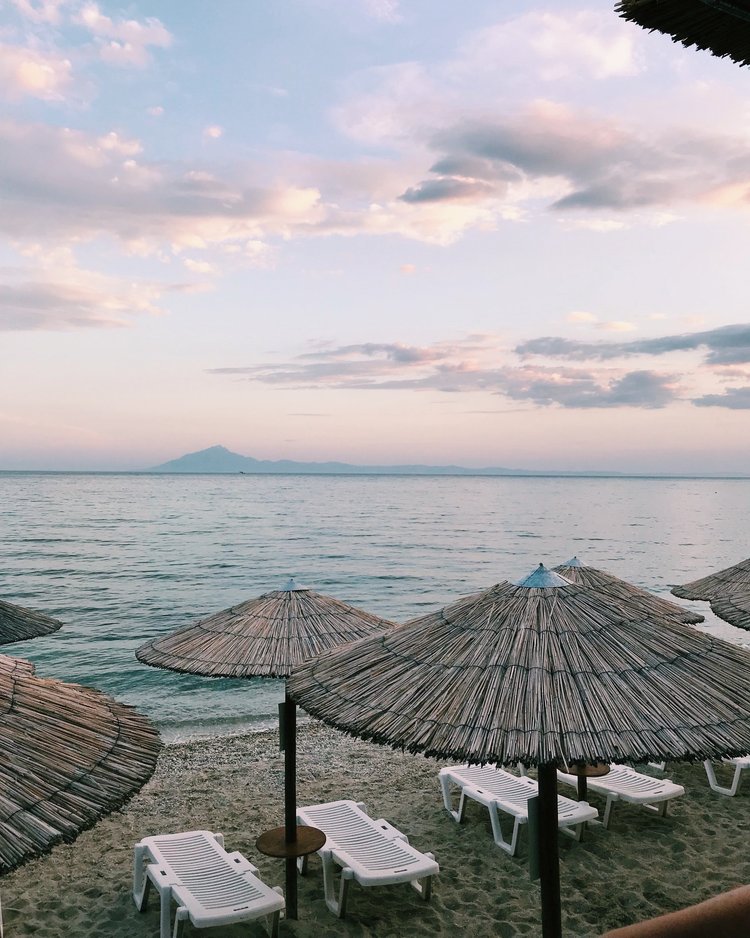
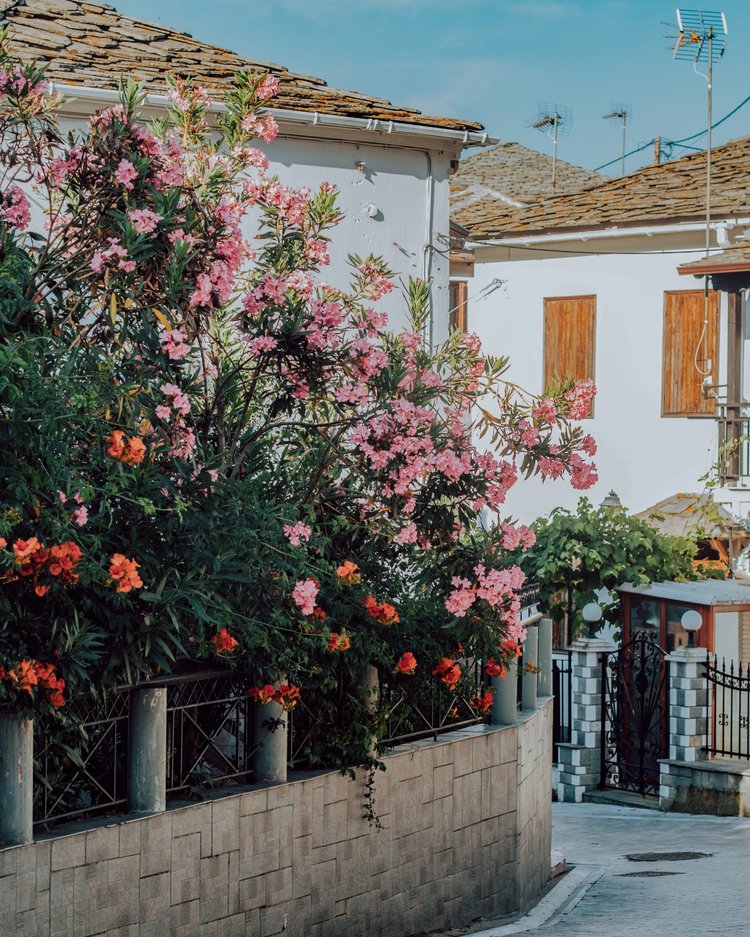
One of the least known clusters, the North Aegean islands are most suited to those who prefer to leave the world behind and reset in a setting where time runs slowly. In this corner of Greece, you can expect unspoiled, pristine scenery, an abundance of nature and cute little settlements mostly frequented by locals of Greek nationals who want to steer clear of tourist-packed places. Thassos is an island for all ages since it is an all-rounder. Quiet, low-key and delightful, there you can recharge and set your own pace, especially if you choose self-catered apartments in Thassos. Home to the incredible natural lagoon of Giola, you will find the island is full of beautiful surprises. Now, Samothrace used to be the most alternative Greek destination for nature slash party lovers, hosting summer rave festivals amidst the immaculate natural beauty. Waterfalls, canyons, ponds and forests are aplenty in Samothrace, and that hasn’t changed, although the rave mentality has gradually subsided. Samothrace has perennially been a place charged with energy, being the home of the temple complex known as the Sanctuary of the Great Gods. Icaria is a famous island that attracts young, active crowds, mostly Greeks. A popular destination for surfers, Messakti beach is known for being one of the top body surf spots in Greece. Fantastic food, laid back and super fun at ‘panigiria’ (village festivals) are guaranteed here.
However, these islands are not very well connected, and so the general concept of Greek island hopping may not fit this island group. The best way to visit these islands is to fly to Kavala from Athens and drive to Keramoti port, from where you take a short ferry ride to Thassos’ harbour, Limenas. You would imagine that you could be able to reach Samothrace from Thassos, but there is no direct connection. Occasionally, there are some ferries during the peak summer season, but you should not rely on it. You’ll have to get to Alexandroupoli by air from Athens, then cross to Samothrace by ferry. Each is accessible from Athens too; however, it may be tricky visiting them all in one go. Icaria has a direct air route from Athens also, or the alternative is a ferry from Athens, which takes up to 7 hours.
This article has been produced in collaboration with Helen-Marie Joyce.


